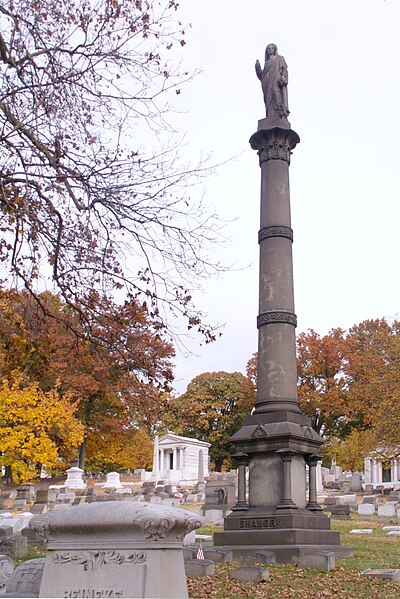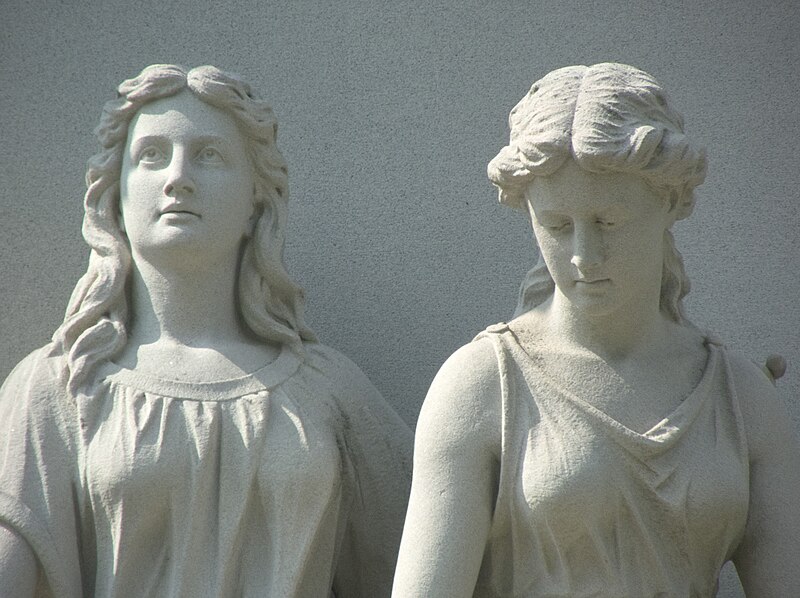
A towering Egyptian column with a statue of Hope at the top.




We also have pictures of the Shanor column in winter and summer.

Like a stone mushroom, this is the visible outcropping of an underground mausoleum. Instead of a heroic statue of steel baron Benjamin Franklin Jones, we get a contemplative allegorical pair, one laying a wreath and palm of victory where his body is buried, the other looking upward hoping to find the real B. F. Jones in that direction. Old Pa Pitt hopes so, too.


We have more pictures of the B. F. Jones monument from 2014.

A granite monument with a crumbling marble statue on top; it was probably allegorical, but one of the arms would have held the key to the allegory, and both are gone. If old Pa Pitt had to guess, he would suggest that this was a statue of Hope, with the left arm holding up an anchor and the right pointing heavenward. This is certainly a good demonstration of the different aging properties of the two kinds of stone.
The statue may date from 1878, the year the cemetery opened, when the first Martin was buried here; old Pa Pitt suspects that the base is later, replacing an earlier base that had been damaged or become illegible. The individual gravestones in front of the monument are matching in style, and look like the style of the early twentieth century, though they include dates back to 1878. Father Pitt’s guess is that the original base bore inscriptions for all the Martins and Aulls buried up to the time of its replacement.


